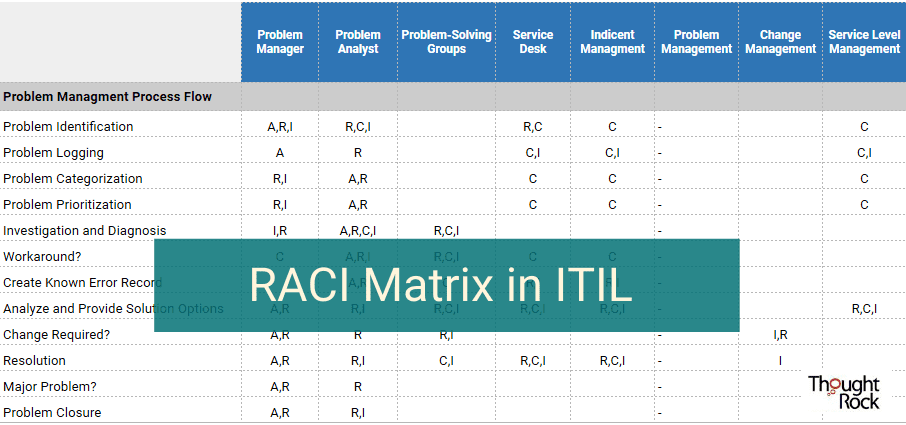A RACI Matrix, also known as Responsibility Assignment Matrix (RAM), clarifies to all involved with a practice which activities each person, group, or team is expected to fulfill. It is also helpful in clarifying the staffing model necessary for operation and improvement. Clear definitions of accountability and responsibility are critical success factors (CSFs) for any improvement activity. Without this, roles and responsibilities within the new practice can be confusing, and individuals will revert to ‘the way we’ve always done it’ before the new procedures were put in place.
The RACI model specifies that only one role is accountable for an activity, although several people may be responsible, consulted, and informed for parts of the activity.
The RACI model stands for 4 main practice activity roles as follows:
| RACI | Description |
|---|---|
| A = Accountable | The single owner who is accountable for the final outcome of the activity. |
| R = Responsible | The executor(s) of the activity step. |
| C = Consulted | The expert(s) providing information for the activity step. |
| I = Informed | The stakeholder(s) who must be notified of the activity step. |
We have put together RACI Matrix examples and downloadable templates for several ITIL practice activities.
RACI Matrix for Problem Management Practice
Problem Management includes activities required to diagnose the root cause of Incidents, to determine the resolution to these causes, and to provide appropriate workarounds so that the organization is able to reduce the impact of Incidents while the Problem still exists.
RACI Matrix for Incident Management Practice
An Incident is as any event that is a deviation from normal that causes disruption to the agreed service for an IT service, or causes a reduction in the quality of agreed service for an IT service, or could lead to a disruption or a reduction in quality of agreed service for an IT service (this includes monitoring activities that provide early detection of possible Incidents).
RACI Matrix for Request Fulfillment Practice
The primary goal and objective of Request Fulfillment is to provide a channel for End Users to request and receive standard services for which a pre-defined approval and qualification practice exists.

